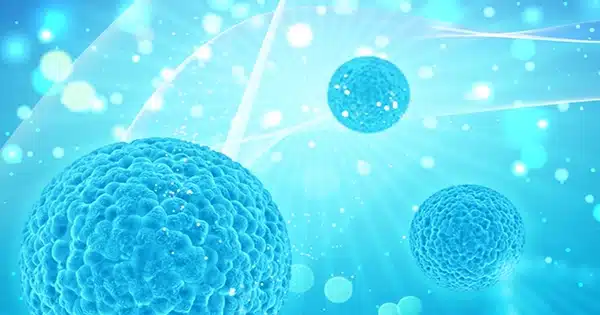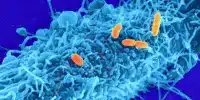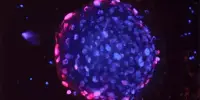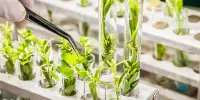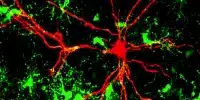Researchers have long believed that once a cell begins its path of differentiation, such as becoming a skin cell, a liver cell, or a neuron, that course cannot be altered.
However, scientists have discovered that this pathway is more complex over the last two decades. A University of Michigan study team has revealed, using zebrafish as a model, that a loop in the body’s mitochondria—organelles within cells that provide energy for the body—may allow cells to retreat up the route of differentiation. Their findings appear in the Proceedings of the National Academy of Sciences.
“Cell fate and differentiation are analogous to a ball rolling downhill.” The stem cell is represented by the ball. The stem cell divides and forms a progenitor cell, which will develop into a skin, neuron, liver, or muscle cell in the future. For a long time, the concept was that the ball would only run uphill and downhill,” said Cunming Duan, U-M professor of molecular, cellular, and developmental biology and director of the undergraduate neuroscience department.
“This was also thought to be true of adult tissue regeneration.” The concept was that if you cut your skin or wounded a muscle, there was a population of adult stem cells doing the same thing: they were like a ball rolling down the hill. However, academics have proved that this is unduly simplistic in recent decades.”
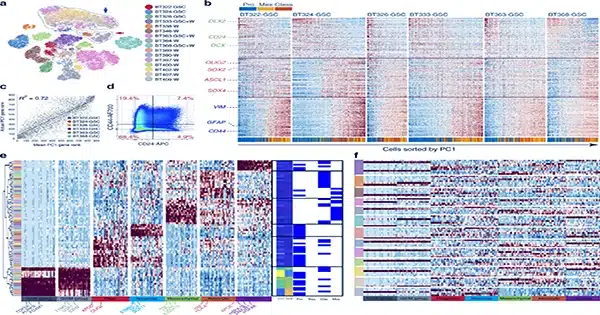
Researchers now understand that cells can traverse a hill and become a different cell type, as well as that cells can move back up a hill and become precursor cells to make additional cells, according to Duan. In the human pancreas, for example, alpha cells create the hormone glucagon. Insulin is produced by beta cells in the pancreas. However, alpha cells can develop into beta cells.
When cells are stressed or wounded, they can also dedifferentiate. For instance, a beta cell may dedifferentiate and become a precursor cell, producing additional healthy beta cells.
Recent research has demonstrated that dedifferentiation is not unique: if tissue is injured, many fully differentiated cells can roll back up the hill, according to Duan. Cancer cells exhibit this type of adaptability as well, complicating treatment.
However, earlier research into the process of dedifferentiation was conducted in artificial systems, according to Duan. You can’t investigate cellular processes by physically removing a section of a fish’s heart or a mammalian liver. So Duan and his research team created a zebrafish model.
The researchers used a green fluorescent protein to illuminate calcium ion-transporting epithelial cells in the model. They were able to use this to cause these differentiated cells to rejoin the cell cycle and visualize the cell dividing, focusing in particular on processes involving the mitochondria.
Mitochondria are frequently referred to as the “powerhouses” of the cell. They generate ATP, a chemical that transports energy in all living species’ cells. However, mitochondria do much more, according to Duan. When they degrade sugar to make ATP, they also produce reactive oxygen species, or ROS, which are extremely reactive molecules that can cause cellular harm.
When mitochondrial ROS are produced in sufficient quantities, they act as signaling molecules. When the researchers triggered cell dedifferentiation and proliferation, they discovered that ATP synthesis rose and mitochondrial ROS levels increased in these cells.
When ROS levels rise, the cytoplasm of the cell contains more Sgk1, an enzyme that plays a role in cellular stress response. Sgk1 then travels from the cytoplasm to the mitochondria, where it phosphorylates the ATP synthase enzyme and initiates ATP synthesis.
The researchers stopped each step in this cycle to see how it affected the cell’s capacity to dedifferentiate.
“We believe this is required for the cell to roll back in the cell cycle,” Duan explained. “In our system, if we knock out the ATP protein enzyme, if we knock out Sgk1, if we block ROS production—if we block any of the steps, the cell can no longer go back into the cell cycle.”
The researchers then analyzed this mitochondrial loop in living human breast cancer cells and discovered that identical steps occurred. According to the researchers, this indicates that this is a typically preserved mechanism that is advantageous to the majority of cells.
And cancer cells are one sort of cell that Duan and his team plan to one day target with their discovery. Understanding cell plasticity is critical in regenerative biology for tissue regeneration, but it is also critical in illnesses like cancer.
“Cancer cells have this kind of plasticity as well, and it’s one of the major reasons why we can’t easily treat cancer cells.” “If you remove one cancer stem cell, another may appear,” Duan explained.
Duan’s next goal is to better understand this mitochondrial loop in various cell types, with the aim that the pathway can one day be targeted for tissue regeneration as well as to prevent abnormal growth, such as cancer.
“We underestimated the resilience of cells and animals.” They’re far more plastic. “We used to think they were a little rigid,” he explained. “Mitochondria play a far more important role in the cell than we ever imagined.” We discovered a very complicated route that operates at the subatomic level and governs the cell’s ability to be robust and pliable.”
Source: https://phys.org/news/2023-06-uncovers-clues-cell-plasticity.html
